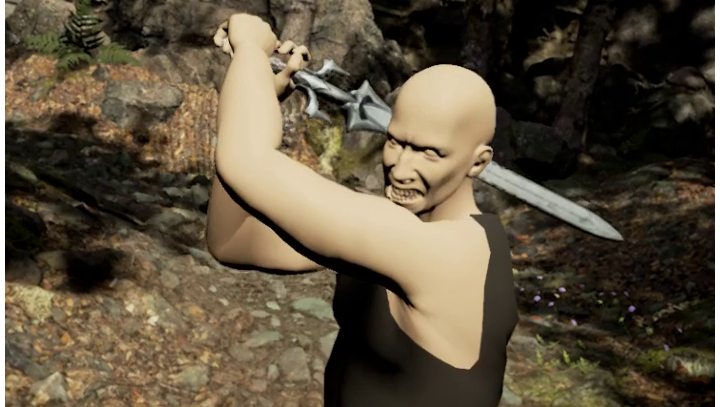Jun 24 2020
In virtual reality (VR) fighting games, sword fights are usually the weak link since digital avatars engage in battle with inaccurate, pre-recorded movements that do not exactly reflect the actions or intentions of a player.
 Touché adds much-needed realism to virtual reality sword fights. Image Credit: University of Bath.
Touché adds much-needed realism to virtual reality sword fights. Image Credit: University of Bath.
A team of researchers from the University of Bath, working together with Ninja Theory, a game development studio, has developed a solution to the difficulties involved in creating realistic VR sword fights: Touché—a data-driven, machine learning-based computer model.
Touché increases the realism of a sword fight by generating responsive animations against attacks and eliminating non-reactive behaviour from characters. Using our model, a game character can anticipate all possible fight situations and react to them, resulting in a more enjoyable and immersive game experience.
Dr Christof Lutteroth, Senior Lecturer in Computer Science, University of Bath
Dr Lutteroth, who is also a director of Real and Virtual Environments Augmentation Labs (REVEAL) and co-investigator at the Centre for the Analysis of Motion, Entertainment Research and Applications (CAMERA), developed Touché together with colleague Dr Julian Padget and EngD student Javier Dehesa.
According to Dr Lutteroth, for VR game designers, the unpredictability of user actions is a major problem.
VR games offer new freedom for players to interact naturally using motion, but this makes it harder to design games that react to player motions convincingly. There are different expectations for screen-based video games. With these, a player presses ‘attack’ and their character displays a sequence of animations. But in a VR game, the player input is much harder to process.
Dr Christof Lutteroth, Senior Lecturer in Computer Science, University of Bath
The Touché scheme for VR sword fighting makes the technical work needed to realize a convincing simulation very simple. It avoids the need for game designers to add one layer of detail on another while programming the movements of a character in a specific situation (for example, to block a specific sword attack).
Rather, actors wearing motion capture equipment are instructed to make a series of sword fighting movements, where Touché develops a model using these movements. The actor’s virtual version can react to various situations in a manner similar to a real fighter.
Then, designers of VR game can tweak this model to fulfill their requirements by fine-tuning high-level parameters, like how aggressive and skilled the game character should be. All this saves a lot of time for game developers and results in more realistic outcomes.
The Bath study involved 12 volunteers who were asked to engage in two 2- to 3-minute sword fights: currently available technology was used for the first fight and Touché was used for the second.
Touché had a strong positive influence on realism as well as the sensed sword fighting skills of game characters. Participants’ feedback hinted at a convincing preference for Touché, where current sword fights were described as “clumsy” and “unresponsive” in comparison.
“Based on this, we are convinced that Touché can deliver more enjoyable, realistic and immersive sword-fighting experiences, presenting a more skilled and less repetitive opponent behaviour,” added Dr Lutteroth. “I’m convinced this framework is the future for games—not only for sword fighting but also for other types of interaction between game characters. It will save developers a lot of time.”
Game developers who had tested this new technology were interviewed by Javier Dehesa, who is based at the Centre for Digital Entertainment.
Developers see the Touché framework as an important practical step in the industry towards data-driven interaction techniques. We could see this technology appear in commercial games very soon.
Javier Dehesa, Centre for Digital Entertainmen, University of Bath
Journal Reference:
Dehesa, J., et al. (2020) Touché: Data-Driven Interactive Sword Fighting in Virtual Reality. Proceedings of the 2020 CHI Conference on Human Factors in Computing Systems. doi.org/10.1145/3313831.3376714.
Sword fighting
Video Credit: University of Bath.